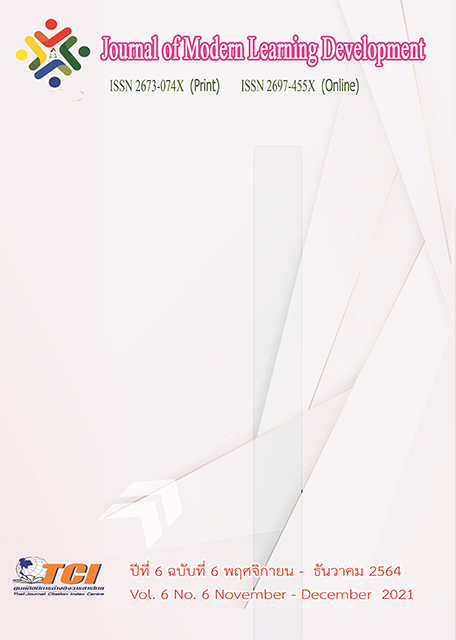Promoting Local Wisdom in Making Buddhist Lent Candles for Buddhist Tourism in Ubon Ratchathani Province
Main Article Content
Abstract
The objectives of this research were: 1) to study the local wisdom of Buddhist Lent candle invention; 2) to study the change in Buddhist Lent candle making; 3) to propose guidelines for promoting local wisdom on Buddhist Lent candle invention for Buddhist tourism in Ubon Ratchathani Province. This was a qualitative research conducted by document analysis and interviews of the target group. The data were interpreted by the descriptive data analysis.
The research results were as follows:
The promotion of local wisdom, uniqueness in way of life, wisdom and knowledge in traditional works is related to Buddhism. The rituals are carried on from the past to the present and there are additional activities to make it more entertained and interesting in terms of the beauty of art and culture well-being of local people.
Changes in lifestyles, traditions, local wisdom and culture leads to differences in candle making in the past and present in relations to the process of making, styles and decorative elements. The purpose of making candles during the Buddha's time was to be Buddhist worship and to honor temples. Currently, for the contest, it is important to take part in organizing the candle parade tradition in Ubon Ratchathani Province.
Guidelines for promoting local wisdom in making Buddhist Lent candles for Buddhist tourism in Ubon Ratchathani Province can be made by applying the teachings that inspire unity, inserting local wisdom through candle making or candle carving and promoting Buddhist tourism in order for people in the community to have faith in the candle parade tradition of the community seriously and see the value. The benefits that come from working together create success in creating great works to further develop the economy and society of the community.
Article Details
References
การท่องเที่ยวแห่งประเทศไทย สำนักงานจังหวัดอุบลราชธานี. (2555). งานประเพณีแห่เทียนพรรษาจังหวัด อุบลราชธานี. การท่องเที่ยวแห่งประเทศไทย สำนักงานจังหวัดอุบลราชธานี.
ธนิต บุตรทิพย์สกุล. (2558). พฤติกรรมการท่องเที่ยวเชิงพุทธของนักท่องเที่ยว วัดในจังหวัดน่าน. วิทยานิพนธ์วิทยาศาสตร์มหาบัณฑิต. บัณฑิตวิทยาลัย: จุฬาลงกรณ์มหาวิทยาลัย.
บุณยสฤษฎ์ อเนกสุข. (2552). รัฐกับการลงทุนทางวัฒนธรรม : ศึกษากรณีงานประเพณีแห่เทียนพรรษา จังหวัดอุบลราชธานี. วิทยานิพนธ์มหาบัณฑิต. บัณฑิตวิทยาลัย: มหาวิทยาลัยมหิดล,
ประเวศ วะสี. (2541). ประชาคมตำบล ยุทศาสตร์เพื่อเศรษฐกิจพอเพียง ศีลธรรม และ สุขภาพ. กรุงเทพมหานคร: สำนักพิมพ์มติชน.
พวงผกา ประเสริฐศิลป์. (2542). ประเพณีไทยกับการเปลี่ยนแปลงตามกระแสวัฒนธรรมโลก. กรุงเทพมหานคร: สำนักพิมพ์เสมาธรรม.
เพ็ญศรี ดุ๊ก และคณะ. (2544). วัฒนธรรมพื้นบ้าน : คติความเชื่อ. กรุงเทพมหานคร: จุฬาลงกรณ์มหาวิทยาลัย.
ภูดิศ โม้งปราณีต. (2552). การพัฒนาการอนุรักษ์ภูมิปัญญาท้องถิ่นไทยวนเรื่องการตัดตุงไส้ช้างของนักเรียนชั้นประถมศึกษาปีที่ 5 โรงเรียนบ้านม่วงฝ้าย อําเภอเสาไห้จังหวัดสระบุรี. ศิลปศาสตรมหาบัณฑิต สาขายุทธศาสตร์การพัฒนา. บัณฑิตวิทยาลัย: มหาวิทยาลัยราชภัฏเทพสตรี.
รุ่ง แก้วแดง. (2541). ปฏิวัติการศึกษาไทย. (พิมพ์ครั้งที่ 8). กรุงเทพมหานคร: มติชน.
สรัญพัฒน์ คันสุขเกษม. (2547). การสื่อสารและการเปลี่ยนแปลงวัฒนธรรมงานประเพณีแห่เทียนพรรษาจังหวัดอุบลราชธานี. วิทยานิพนธ์นิเทศศาสตรบัณฑิต. บัณฑิตวิทยาลัย: จุฬาลงกรณ์มหาวิทยาลัย.
สามพร มณีไมตรีจิต. (2539). บทบาทวัฒนธรรมไทยกับการท่องเที่ยว. เอกสารประกอบการสัมมนาทาง วิชาการโครงการสืบสานวัฒนธรรมไทยนิยมไทย ครั้งที่ 3. กรุงเทพมหานคร: การท่องเที่ยวแห่งประเทศไทย.
สุรเชษฐ์ เวชชพิทักษ์. (2554). รากฐานแห่งชีวิตวัฒนธรรมชนบทกับการพัฒนา. กรุงเทพมหานคร: โอเดียน สโตร์.
อมรา พงศาพิชญ์. (2555). ความหลากหลายทางวัฒนธรรม. กรุงเทพมหานคร: จุฬาลงกรณ์มหาวิทยาลัย.
เอกวิทย์ ณ ถลาง. (2542). ภูมิปัญญาชาวบ้าน. กรุงเทพมหานคร: มูลนิธิภูมิปัญญา.


